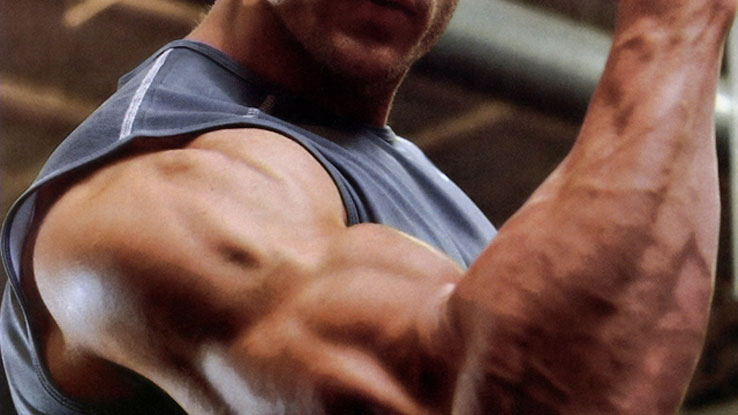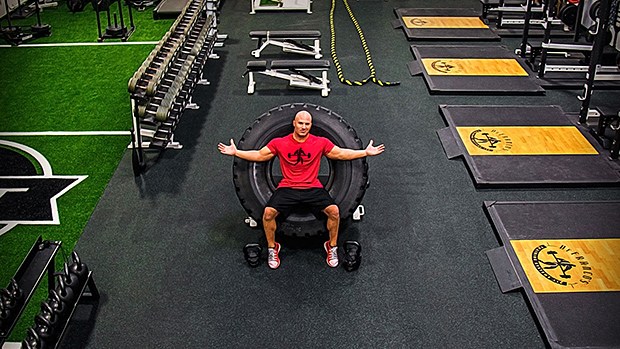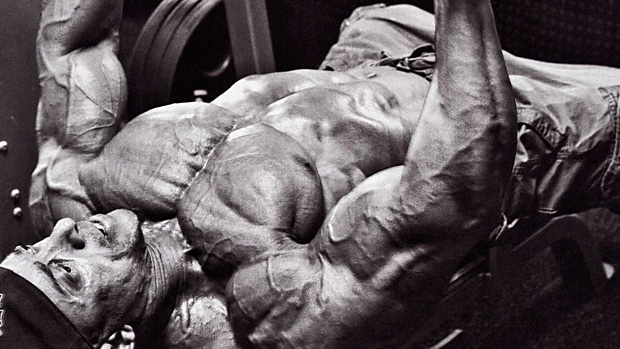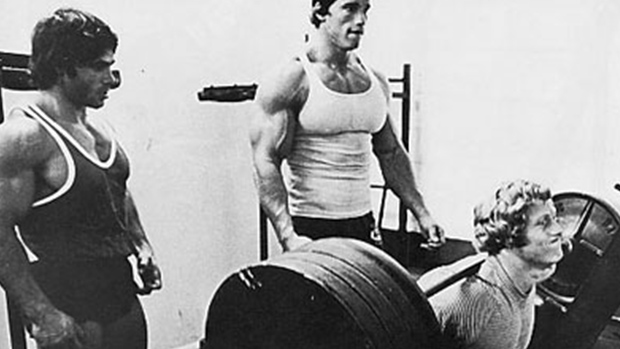In Steve Ilg's book, "Total Body Transformation," he notes that the word "fit" comes from the Old Norse meaning "to knit." I can't think of a better way to describe it: fitness is knitting.
A friend of mine once told me that "life is a tapestry." Threads from here and there knit together to form you as a person. With that in mind, here are a few ideas about seeing your training and fitness goals as part of a larger tapestry of life.

First, there's an old saying that says, "Success leaves tracks." Growing up, I was lucky that Strength and Health magazine came out once a month. I'd read the training of football players and track athletes and realize that I had to get stronger. Gary Ordway, an elite American discus thrower, had these numbers in his pre-season training:
- Squats: 505 x 3
- Deadlift: 455 x 3
- Power Clean: 285 x 2
- Incline Press: 325 x 3
- Sit ups: 4 sets of 25
When I read this article, I realized that the road from my lifts to his lifts wouldn't be overnight. But at least I knew the path! My 85-pound incline barbell press – and pardon me for bragging but I was doing eight reps with it – was a bit shy of his load.
In my many travels, I enjoy visiting college campuses and researching old articles and materials. Recently, I found an old American Athlete article that discussed how America's best shot put and discus thrower at the time, L. Jay Silvester, had added deadlifts to his training.
The article discussed how a 400-pound deadlift would help him improve his marks "even more." That's a lift routinely done by high school sophomore football players now.
So one of the most fundamental lessons of my career was clear by age 14: lifting weights and getting stronger would support my goals. The lesson I missed was that "enough is enough" when it comes to strength. L. Jay, for example, threw 210 feet with his 400-pound deadlift. At the same time in my career, I threw 190 with a 628-pound deadlift.
The toughest issue for me to wrap my mind around is still that you need to be strong enough. Certainly, I guess you could add flexible enough, mobile enough, and enough of enough is enough, but you need to get to certain standards and then do your best to stay there.
So, how do you find out those standards? Ask those who've been on this road before you.
A certain Austrian boy named Arnold competed in Olympic lifting meets and snatched 242 and clean & jerked 303. Other great bodybuilders, including Sergio Oliva and Franco Columbu, competed on the platform. No, Arnold's numbers aren't earth shattering, but they're pretty good – good enough to support one of the best bodies in history.
How strong should you be? Here are some standards that I've used with success the past few years:

- Push
- Expected: Body weight bench press
- Game Changer: Body weight bench press for 15 reps
- Pull
- Expected: 8-10 pull-ups
- Game Changer: 15 pull-ups
- Squat
- Expected: Body weight squat
- Game Changer: Body weight squat for 15 reps
- Hinge
- Expected: Body weight to 150% bodyweight deadlift
- Game Changer: Double body weight deadlift
- Loaded Carry (Farmer Walk)
- Expected: Farmer Walk with total body weight (half per hand)
- Game Changer: Body weight per hand
I used to use different terms than "expected" and "game changer," but no matter. I recommend the basic training templates if you haven't reached the minimum level of simply expected. You honestly don't need much more than linear periodization and perhaps a few minutes or hours on the basics of technique.
If you have game changing numbers across all five movements, well, let's just say the weight room isn't your problem unless you're in a pure strength sport like powerlifting or Olympic lifting or strongman competition. The distance of the Farmer Walk will vary, but let's assume something as short as 40 meters.
For women, any strength training seems to help. Even though I've been chasing standards that are appropriate, the chasm between the drugged ladies and the clean ones has made it hard to find good numbers. Honestly, I used to think that any lifting was a pretty good beginning.
These are the most current numbers I'm using with women:

- Push
- Game Changer: Bodyweight bench press
- Pull
- Game Changer: 3 pull-ups
- Squat
- Game Changer: 135-pound back squat for 5 reps
- Hinge
- Game Changer: 275-pound deadlift
- Loaded Carry (Farmer Walk)
- Game Changer: 85 pounds per hand
Again, once a woman reaches all five levels in all five movements, good things tend to happen in the field of play. Now, I know these numbers are low, but it's the balance across the five that seems most important for athletes.
Moreover, achieving all five levels tends to support this notion of knitting. If you have the appropriate levels of strength for your goals, look beyond the weight room for the reasons you're not achieving them. If your goal is fat loss, look at the plates on the table, not the plates in the gym.
Second, failure also leaves tracks. In the past month, I lost my training journal and doubt I'll ever find it again as I lost it in Orlando. I hate losing my journal as this – as I've said before – is, or was, my gold mine. I can trace injuries, illness, and competitive failures back through the days, weeks, and months leading up to the moment things became unglued.
As I look back over a career that takes us back to the Johnson administration, I can pull out failure after failure. Let me suggest something that I put into my book, "From Dad to Grad," that I wrote for my daughter on her graduation from the eighth grade. She recently got married, but the advice is still sound:
- Most people are going to miss the point here, so let me start off by reminding myself that most people miss the point of anything related to success anyway, so I shouldn't worry too much about most people missing the point.
- The point? Sometimes, not achieving a goal or a dream spurs people into making a greater impact on the world than fulfilling that goal or dream. And the reverse is true, too: getting that dream can flatten a person out for years to come.
- I've known a lot of college English majors who spend four years writing their own work in creative writing and poetry classes and never write another essay as long as they live. They may spend hours red penning in semi-colons and the words "transitive verb" above a student's paper, but never again write a composition. They attained the degree – and stopped writing.
- Many athletes sweat and fight for four years of high school to get a scholarship to college, then quit after the first weeks of college practice because "it doesn't mean anything" to them.
- Mark Twight, the author of "Kiss or Kill" and one of the world's foremost mountain climbers, noted the same thing at our dinner table not long ago. Faced with a decision to keep climbing and probably die on Mount Everest or to come back to base camp, he came back down. But, he noted, he learned far more from this failure than he would have from succeeding.
- In a sense, success can dilute the lessons of life. No, I'm not telling you to fail; it's just that failure seems to prod most people into rethinking their attempts, their journey, and their path.
- Joseph Campbell commented on this several times regarding the fact that the most renowned person in Comparative Religion never got his doctorate. Campbell chose not to do it and often encouraged his students to not go on either.
- He also warned them of getting buttonholed in a job that stopped them from exploring all the directions that life presented them. He noted that people who earned their terminal degree and were appointed to their dream job often "flattened" out.
- Much like Earl Nightingale warned us, "A rut is a grave with the ends kicked out."
- Every four years, the world turns it attention for a few weeks to the Olympic sports. I'm not exaggerating when I tell you that one of the worst kept secrets of Olympic sports is how many of the athletes quit their sport after the Olympics.
- Even gold medalists abandon the pool, track, field, and court. After all the sacrifice and pain, "Here's your medal, thank you very much, next!" just doesn't seem to fulfill the athlete as much as the dreams of victory while training.
- Those who fail to make their goals turn to coaching, writing, or other forms to continue expressing their goals in other mediums. Or, they take those lessons learned and parlay them into a successful life, but they don't just drop them and walk away.
- Now, I'm not encouraging failure or the initiating of a "culture of failure." But I coached football at Judge Memorial Catholic High School for a long time and I realized a very unsettling thing: when we began losing games, my athletes were getting more out of losing than winners did from winning.
- When you win a game, as I had the good fortune to do when playing for South San Francisco High School, the team goes into the locker room and before you untie your shoes, the coach is talking about next week. The total amount of celebration in a winning locker room – for true winners – is often not very much.
- As for the losers? The losers have hugs, tears, long heart tugging speeches, and kisses from the prettiest girls. While the victors are thinking of yet another week on the grindstone, the losers are being cuddled and caressed back to a smile.
- Don't let success flatten you nor let failure let you join the "Loser's Club." Learn from failure, enjoy it (if you can), but plug along into another expedition to the top.
- When you win, be gracious. When you get your goals, dream of other goals.
Kelly went on to become Prom Queen and All-State in the discus in the same week, graduate from college in three years while also volunteering full-time at an impoverished school, and is now a first grade teacher. Her life, so far, is "knitted."

Is there an easier way to learn how to achieve your goals and learn from failure? Actually there is, and it's my third insight: Pick good lifelong mentors.
This is not what most people think. I'm not necessarily talking about those who guide, coach, or teach you here. What I'm saying is that you should watch carefully someone who is ten, twenty, or thirty years older than you that you admire and salute their success in life, learning, and lifting.
In my case, my positive role model has always been Dick Notmeyer. When my family first met him he was 47 and looked to be in his early thirties. He trained with very basic movements, took his supplements, and drank protein drinks every day. He looked and moved great.
When the great jogging boom hit, Dick got swept up in it with his friends and lost some of his shoulder mass and looked older. When Dick moved to Arizona, he dropped the jogging and began simply cycling and lifting – and he looked younger!
Dick not only taught me how to Olympic lift, he also taught me the value of combining lifting and cardio throughout a lifetime. The key, it seems, is not to let the cardio side destroy the muscle mass.
As I've since noted in every talk and work shop, after age 28, the body seems to conspire to lose lean body mass and stiffen up. Jogging, while certainly better than nothing, tends to waste some muscle mass and lock up the joints. Runners turn to everything to deal with injuries from arch support, weird shoes, yoga, and herbal concoctions. The alternative, as I learned from watching Dick, is to just lift and get some crashless cardio in.
Of course there were others I learned from. One thing that's clear to me is that alpha males tend to hang around the sports I compete in. The day of the competition is the day to shine.
Alas, that's not what most guys in the throws and lifting sports seem to understand. If a stupid challenge somehow presents itself, it becomes:
- "Watch this!"
- "Hold my beer!"
- "Get your video camera ready!"
As anyone with an internet connection can see, this is where things tend to go badly. Among us who came up as throwers in the 1970s, the bulk of the injuries are from doing something extremely stupid. Blown biceps from challenges, hamstrings torn off the bone from doing something the human body wasn't designed to do, and dislocated shoulders from trying to prove that the shoulder joint can really do much more than God thought it should do.
When I also think about the number of friends I've lost to heart attacks and bad choices, I'm also happy that I avoided those life-altering bad choices, like drugs.
When I think of the dozen or so old friends who are dead or crippled from bad choices, I'm happy that I was lucky enough to have "chosen wisely," as the knight inIndiana Jones and the Last Crusade tells us.
- Think about the life you want to live ten, twenty, or thirty years from now and observe someone who is living this way now. I wanted to be "healthy, wealthy and wise" and I observed, followed, and studied those who had this, and simply did what they did.
Your goals and your dreams should be intertwined with threads of career, family, and community, as well as fitness, health, and body composition. Certainly, that 17-inch arm is a noteworthy goal, but be sure to knit it with a lifetime vision of health and success.
Study those who have achieved your goals and follow their tracks. Learn from failures along the way and even embrace them as the price of failure is so high.
Finally, take some time to "Go back to the Future" by looking at those people who are a few decades older than you and reflect the lifestyle you want to eventually have.
Knit all of this together for a fit life.





